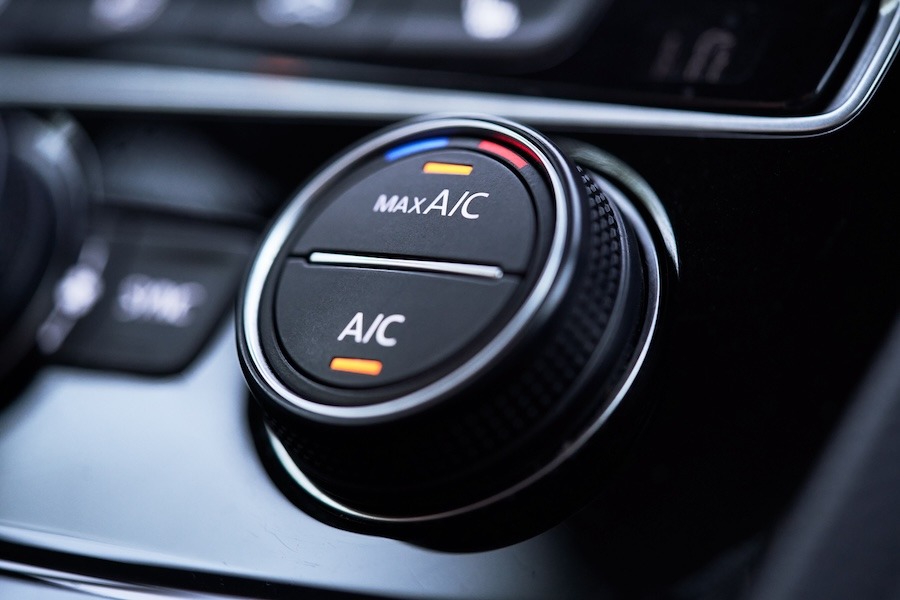As winter’s chill fades and warmer days approach, it’s the perfect time to get your car ready for spring. Whether you’re shaking off the salt and grime of winter or ensuring your vehicle is running smoothly, a little proactive maintenance now can save you time, money and headaches later.
In this DIY guide, our Tinker experts will walk you through essential spring car prep, from tire checks to fluid top-offs, so you can enjoy the road ahead with peace of mind.
1. Check and Replace Key Fluids
Before the weather warms up, it’s critical to check the condition of your vehicle’s essential fluids.
- Engine Oil: If it's dirty or more than a year old, it’s time to change your oil and your oil filter. In hot climates, consider using a higher-viscosity oil for better performance.

- Engine Coolant: Replace yours if it looks rusty or is more than five years old.
- Transmission Fluid: Ensure it is fresh (pink and sweet-smelling) and at the correct level; dark fluid with a burnt smell should be replaced.
- Brake Fluid: Brake fluid absorbs moisture over time, compromising its performance. Change yours every two years and don’t forget to bleed the system every time you work on your brakes.
Always consult your owner's manual to ensure you're using the correct fluid types for your vehicle. If you run into any trouble along the way or aren’t exactly sure what fluids to buy for your car, our Tinker experts are here to help.
2. Check and Test the Battery
 You should perform a routine inspection of your car’s battery with every change of season.
You should perform a routine inspection of your car’s battery with every change of season.
Start by checking the battery for any visible signs of damage, such as cracks or leaks. Additionally, ensure the battery is securely fastened and all connections are tight. Examine the terminals for corrosion; if you find a white, ashy substance on the terminals, remove them and clean with a combination of baking soda, water and a $10 wire-brush-style battery terminal cleaner.
To disconnect the battery safely, always remove the negative terminal (with the “-” sign) first. This reduces the risk of creating a short circuit. Likewise, when your project is complete, reconnect the negative terminal as your final step. Using this sequence protects both your safety and the integrity of the electrical system.
Next, use a multimeter to test the battery voltage. A fully charged battery should show around 12.6 volts (with the engine off). If the reading is below 12.2 volts, it's probably time to replace the battery, which has a service life of about four years.
3. Check the Hoses and Belts
 Cold winter temperatures can cause rubber hoses and belts to harden and become brittle. A quick inspection of these parts can prevent catastrophe down the road.
Cold winter temperatures can cause rubber hoses and belts to harden and become brittle. A quick inspection of these parts can prevent catastrophe down the road.
Take a flashlight and check the hoses under the hood for swelling, cracking or leaking, particularly at their connection points. Make sure every hose clamp is tight. If you detect any issues, replace the affected hoses and any surrounding clamps. This is cheap insurance against a major blowout, which could lead to significant engine damage.
Then inspect your serpentine belt or accessory belts at the front of the engine. They drive several critical accessories, including the alternator and air conditioning compressor. Look for signs of fraying or cracking. If you find any wear or notice a belt is loose, it’s time to replace it.
4. Check Your A/C
 To make sure your air conditioning (A/C) system is functioning properly, turn it on to the coldest setting. If the air is not blowing as cold as it should be, you may have a refrigerant leak, which can be coming from the condenser, compressor, evaporator coils, hoses and/or connections.
To make sure your air conditioning (A/C) system is functioning properly, turn it on to the coldest setting. If the air is not blowing as cold as it should be, you may have a refrigerant leak, which can be coming from the condenser, compressor, evaporator coils, hoses and/or connections.
Sometimes recharging the system with refrigerant will solve the problem, though that fix is often temporary. The best fix is to find the leak with an A/C leak detection kit, which are available starting at around $65, then replace the leaky components before recharging the system.
Also check the condition of your cabin air filter, which is typically found behind the glove compartment or under the dashboard. Replace it if it’s dirty. Your owner’s manual should provide the specific location as well as directions for accessing it. Once located, gently open the filter compartment and slide out the old filter, again noting its orientation, wipe out any leftover material, place the new filter in the same orientation as the old one and close the compartment. Now you and your car can breathe a little easier.
5. Check Your Tires
 Old, worn out or “bald” tires are dangerous in wet weather conditions, so it’s important to inspect the condition of your tires with every change of season.
Old, worn out or “bald” tires are dangerous in wet weather conditions, so it’s important to inspect the condition of your tires with every change of season.
Measure the tread depth of each tire with a dedicated tread depth gauge. If you don’t have a tread depth gauge, you can check your tread-depth with a penny. Push the penny into a groove between tread blocks. If you can see all of Lincoln’s head, your tread is worn below 2/32 inch and your tires need to be replaced.
6. Wash Away the Winter Grime

Finally, give your vehicle a thorough spring cleaning to remove any grime and road salt it has accumulated through the winter. This will help maintain your car’s appearance and ward off potential corrosion.
Spend extra time and special attention on the areas that collect dirt and salt, such as the wheel wells and undercarriage. Once the car is clean and dry, wax it to add a protective layer to shield the paint from the sun's UV rays, which can cause oxidization.
For more helpful DIY advice during your Spring cleaning, speak to one of our Tinker Experts today!



